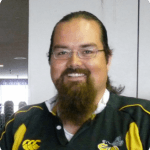The Gitga'at Guardian program ensures that the food security and community well-being of the Gitga'at Nation is protected while also providing employment opportunities in the remote community.
Gitga’at Guardians: Sustaining a Way of Life
Estimated Reading time

20 Mins
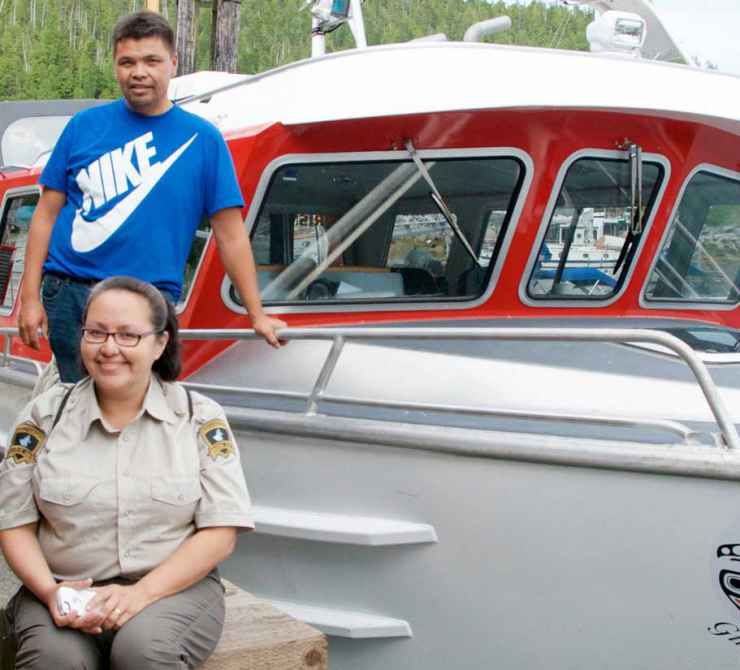
Hartley Bay
Hartley Bay is one of the most remote communities in BC, accessible only by boat or floatplane.
At a Glance
Located on British Columbia’s remote northwest coast, the present-day home community of the Gitga’at Nation is Hartley Bay. The Gitga’at have been stewards of their land and its resources since time immemorial, and their surroundings are deeply tied to their customs, daily life, and cultural identity.
Gitga’at people residing in Hartley Bay still live a homogeneous lifestyle gathering and harvesting 90% of their food from the land and marine environment. The Nation has been impacted by the recent developments in the area and saw the need to enforce conservation practices and effective environmental monitoring so that future Gitga’at members can continue to live from the land. They achieve this by implementing traditional use knowledge with scientific practices through their Gitga’at Guardian program.
Stewarding from the Start
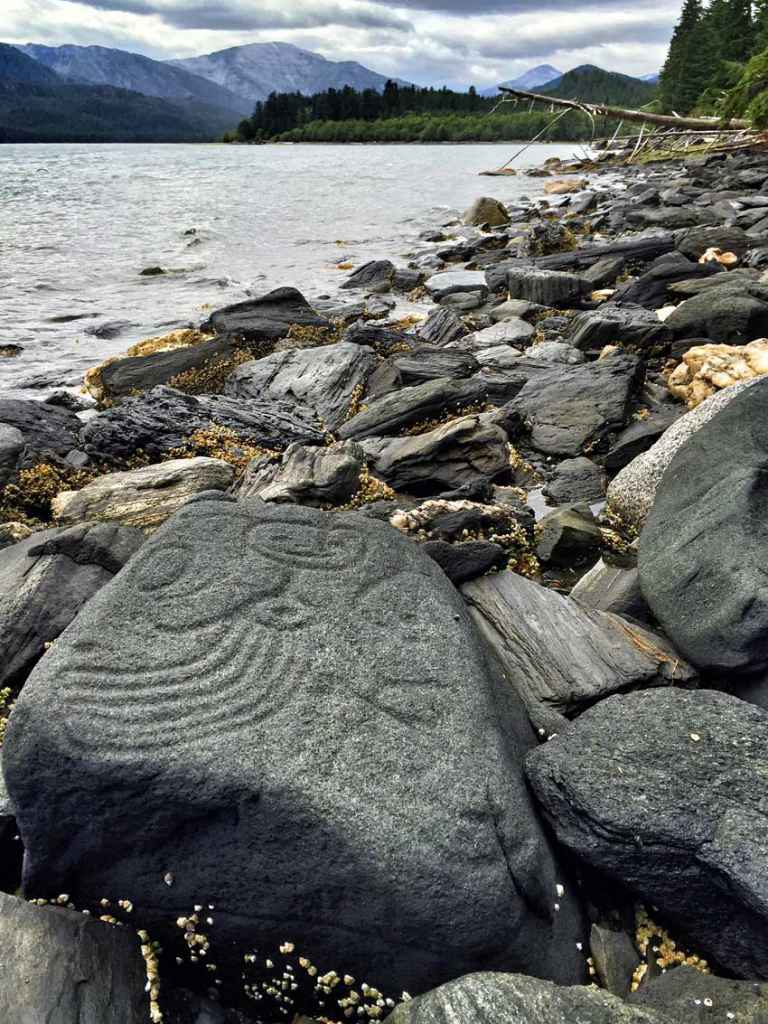
The territory of the Gitga’at Nation spans 7,500 square kilometres and features many diverse ecosystems, including glacier-capped mountain ranges, rare estuary environments, remote coastal islands, and large swathes of temperate rainforest. The territory is also home to bears, whales, salmon, and many other species. Traditionally, Gitga’at people traveled widely throughout their territory, following ancestral routes to seasonal harvesting sites.
Today, Gitga’at First Nation members continue to maintain close ties to their lands and waters as stewards of their territory. “There’s an amazing amount of knowledge about traditional management of our resources in our territory,” says Spencer Greening, a Gitga’at member who is researched and documented local knowledge of the area as part of his Master’s thesis at the University of Northern British Columbia and who is now pursuing his PhD at Simon Fraser University. “The Elders in our community grew up here, speaking their language, and using a dugout canoe to go to Laxgalts’ap. Those Elders still have memories of how to manage the fish there, how many to catch, which ones to catch, and when to go.”
There’s an amazing amount of knowledge about traditional management of our resources in our territory.
There are many culturally significant and ecologically sensitive areas in the Gitga’at territory, including 20 conservancies and protected areas created from the Great Bear Rainforest agreement. For example, Laxgalts’ap, known also as “Old Town,” is an ancestral home of the Gitga’at and former main winter village site. In more recent times, members traveled to Laxgalts’ap from Hartley Bay for the fishing season in late summer and early fall.
The Gitga’at have many other important village and camp sites, such as “Clamstown,” in the Southern part of their territory, where the low tides expose clams for harvest, or Kiel, a spring camp where the Gitga’at go to harvest seaweed. Due to their remote and isolated location, the present-day Gitga’at community continue to view these resources as vital to their well-being, and work to sustain them as they have for generations.
A New Monitoring Model
In recent years, the need to increase monitoring and protection efforts has risen, but the opportunity for Gitga’at members to get out into their territory has been decreasing. Previously, many Gitga’at members were commercial fishermen and could access the remote waterways of their land. However, the decline of the fishing industry in the 1990s significantly reduced the number of Gitga’at members frequently out on the water.
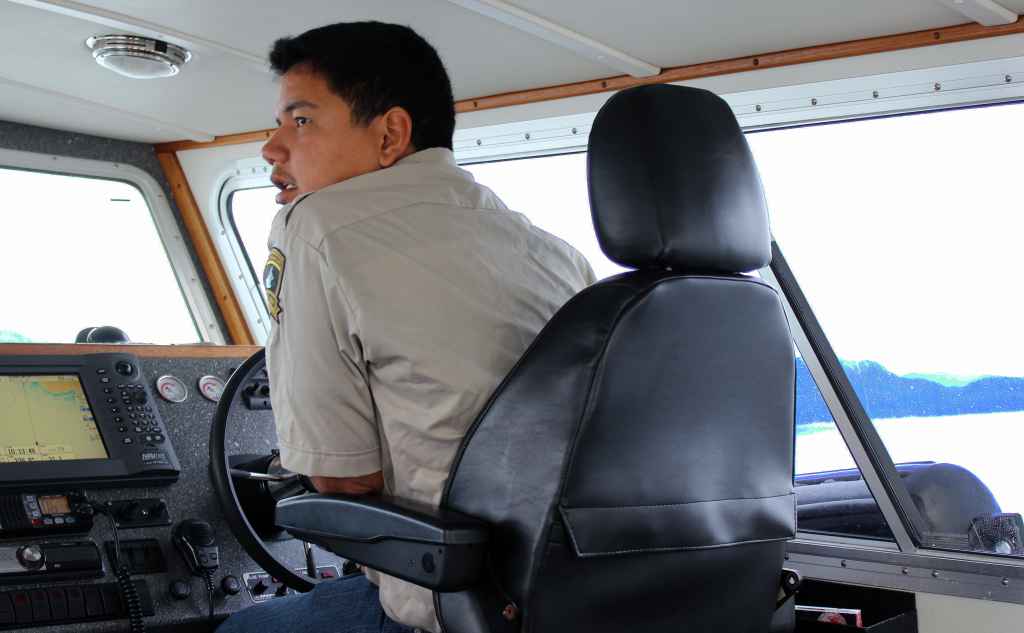
Prior to 2011, a small stewardship program was in place to fulfill the conservation aims of the community. Kyle Clifton, member and Environmental Assessment Coordinator of the Gitga’at Oceans and Lands Department, explains, “before the restructuring, we had a small ‘technical team’—basically a couple of Nation members who would do jack of all trades kinds of things and would handle anything from fisheries to patrols.” However, a rise of industrial proponents and vessel traffic in the territory increased the need for the community to integrate resource management with more comprehensive monitoring practices.
The clan system in Gitga’at means hereditary chiefs help guide decisions around conservation. In 2011, this system led to the start up of the Gitga’at Guardian program: “The village made a decision. We were getting a lot of concern that resources in our territory weren’t being managed as they should be,” says Clifton.
We want to have staff and equipment that are able to respond should there be any incident that requires us to be out on the water to protect what we have.
“So we, the community at the time, thought that the best way to ensure that our resources were being looked after was to set up the Gitga’at Guardian program so that we are always out on the water and we are able to see things that are coming. We want to have staff and equipment that are able to respond should there be any incident that requires us to be out on the water to protect what we have.”
Creation of the Gitga’at Guardians

The first steps for start up of the new Gitga’at Guardian program was to reorganize the overarching stewardship technical team into different departments and build the capacity of each.
“Before the restructuring, it was not as organized as it is now,” explains Clifton. “Now we have each of the departments within one entity, the Lands and Marine department. Within it we have the Guardian program, Fisheries, and the Hatchery. Each has its own manager and staff. It’s more organized in that we have people handling the management and organization and then the guardians who handle all of the surveys, patrols, and stock assessments that we do throughout the year.”
The change allowed each department to more accurately focus on its duties, and produce more honed research results. “We are able to see a bigger picture now,” confirms Clifton.
A second aim of the program was to create opportunities for members to actively monitor their territory. “We saw the importance of having our own people out on the water to manage and monitor the territory” says Clifton. “A lot of our members grew up on the water through commercial fisheries, and when that went down and we didn’t have as many jobs in it as before, it left a hole for those who enjoyed being out on the water and had an existing knowledge of the territory.”
A lot of our members grew up on the water through commercial fisheries, and when that went down and we didn’t have as many jobs in it as before, it left a hole for those who enjoyed being out on the water and had an existing knowledge of the territory.
Including these members as staff served the dual purpose of recruiting already skilled technicians who were familiar with the area, as well as supporting the employment goals of the community. “We thought this served a couple of main purposes, one that we are looking after our territory effectively, but also that we could provide a certain kind of job that our members were looking for. It was our hope that we would train members and if we paid them well and provided learning opportunities, they would see they can have a career as a Guardian and it would entice them to stay.”
Building a Living Map
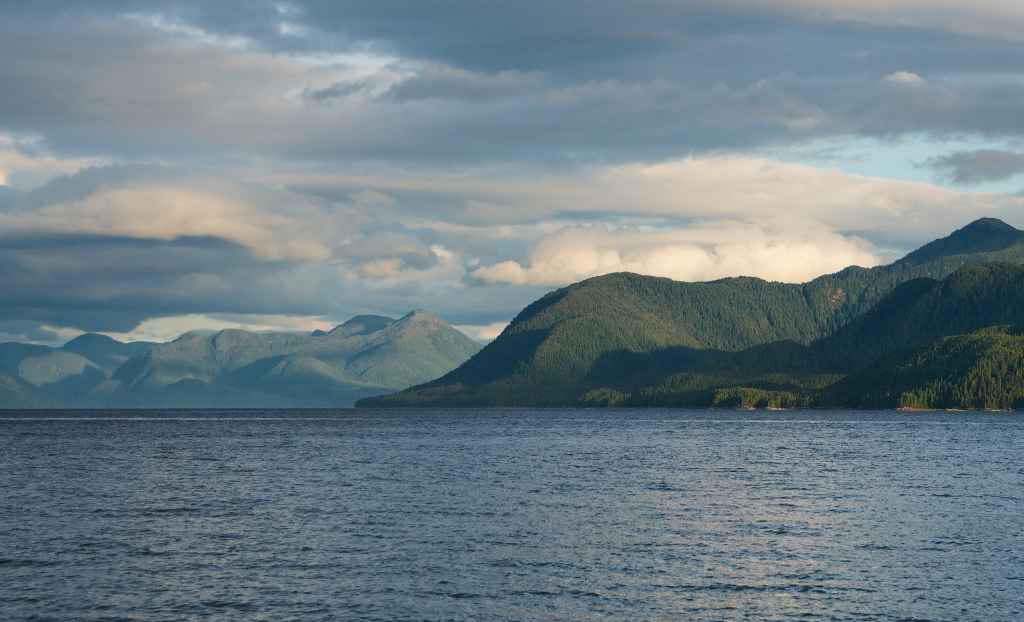
In the years its start-up and restructuring, the Gitga’at Guardian program has continued to develop and achieve important conservation objectives. The guardians have invested funding to build up monitoring capacity and enhance resource management. One initiative of the ramped-up monitoring efforts has been improved data-mapping program to track all species stocks, environmental changes, and vessel encounters.
This program both informs decisions on resource management by the council and hereditary chiefs, as well as strengthens the core Gitga’at value of maintaining community connection to their territory.
Marven Robinson, Supervisor of the guardian field staff, explains: “We are building a living map. We’ve done quite a bit of work on mapping cultural features and place names. We are now hoping to consolidate this data together so our people can use that to jump on a boat and go somewhere in the territory, knowing where to go and what’s there. What we need is the people to able to go and get to these special places, and to have our own names on them rather than using the European names.”
The best way of teaching our children is a hands-on approach so they can start using the language and seeing its connection to our territory.
This initiative will also help transfer traditional knowledge to youth. “The best way of teaching our children is a hands-on approach so they can start using the language and seeing its connection to our territory. To have something that we’re able to say, ‘this is ours, and this is how we are going to use it.’ Then to take the Elders out, and show them, ‘this is Old Town, this is Laxgalts’ap,’ in our own language — that’s special. To have the data, to have this ability, is pretty amazing.”
The guardian program is also integrated into the Gitga’at’s traditional Aywalk laws through consultation with the hereditary clan chiefs. “The hereditary chiefs are involved at a strategic level,” says Clifton. “The department managers will relay our plans to them, and they will come to us when they have something they are interested in and would like the Guardians to look into.” It’s a model that works, says Clifton. “They’re happy and proud of what the Guardians are doing, and to be able to have our boats be out and visible in the territory and to have people know that if something goes on that they can talk to the Guardians. It’s a good thing all around.”
Key Challenges
Community Support Matters
When looking to start up the Gitga’at Guardians and restructure the stewardship office, management knew bringing the community on board with their vision would be key to its success. In the past, when the stewardship office was smaller and had fewer staff, effort to reach out was not as robust.
“What we have learned through this process was that we needed to ensure that the community is aware of how an organization is built every step of the way,” says Clifton. With the enhanced capacity of the department, more outreach into the community is possible. The community newsletter, The Gitga’at Guardian, helps keep everyone informed on the current stewardship programming.
Invest in Key Equipment
Another success of the program was to invest in equipment which enables work to be carried out safely in the remote territory. This part of British’s Columbia’s coast sees intense and varied weather, often without much warning.
“One lesson learned was to ensure that we have the proper transportation and monitoring equipment in place to make sure we are able to have more days on the water” reports Clifton. “Our main crew boat was out of commission for a number of months while getting its engine replaced, and this had a big impact on our work. If the weather was bad we were unable to go out because our smaller boats couldn’t handle the conditions. With the crew boat there are a lot more days we can go out and be safe.”
The inclement weather makes the need for proper equipment even more necessary for the Guardians as they are often first responders to a distress call. Furthermore, safe vessels ensure the Nation is able to carry out important monitoring work and access all parts of their territory throughout the entire year. The purchase of a new vessel enabled the Guardians to consistently carry out their research and monitoring work.
Social Outcomes
The start-up of the program has created five new, full-time jobs for Gitga’at member in the community as Guardians. These positions provide stable employment in the remote area and support retention of Gitga’at members who may otherwise have to leave the community for work. “With this position, I am able to stay in the community with my family,” says George Fisher, Gitga’at Guardian.
Coast Funds awards have also support training and education initiatives to boost the technical capacity of the guardians. Initiatives have included training for data collection, sampling and processing, first aid certification, vessel operator tickets, and by-law enforcement courses. Some staff have gone on to further employment opportunities with the extensive training they have received as Guardians.
“It’s also interesting to note”, says Ellen Torng, CEO of Gitga’at First Nation “that 98% of the village population over the age of 16 are all fully qualified and licensed to operate a pleasure vessel. This includes SVOP, MED 3 and ROC certification.” According to Torng, at the last marine training course held in Hartley Bay in 2015, the highest mark obtained was by a 15 year old grade 10 student.
Torng says the implementation of the Young Guardian program in 2012 allowed the Nation’s summer program to be more culturally oriented as students are required to spend two weeks with the Guardian program conducting various field visits around the territory. The Young Guardian program is operated through the Hartley Bay Elementary Secondary School under the direction of Cameron Hill the local Gitga’at principal.
Learn more about certifications.
Cultural Outcomes
An important initiative of the program is to identify, map, and protect significant cultural and archaeological features. This work is not only protecting cultural values and traditions, but creates pride in the community around the process.
“The Gitga’at Guardian program is important to us, not just for the jobs it creates, but for the pride instilled in the crew and the community,” says Clifton. “Having these people employed and out in the community and the territory in their uniforms is definitely appreciated by everyone, because they know that people are out there and looking after what we have.”
The program supports the Gitga’at First’s Nation’s core values to protect and maintain their resources and while strengthening their connection to, and knowledge of, the territory. Protecting their resources and promoting traditional food harvests and members’ access to them is one important part of this.
Mary Reece, a Gitga’at Guardian Data Analyst, explains, “The Guardian program means a lot to us and supports traditional customs. We are planning a journey to seaweed camp this Fall with the help of the Guardians. It’s something I remember doing as a child and I’m excited to be able to share that experience with my sons.”
Learn more about traditional foods.
Economic Outcomes
The research provided by the program assists the community in making informed decisions on development and economic plans using their own research and data. Integrating the stewardship of natural and cultural resources throughout the territory gives the Nation’s leadership certainty in making economic decisions, and enables the Nation to effectively partner with industry, knowing that economic development projects including forestry and fishing are aligned with long-term conservation efforts.
Learn more about Partnerships.
Environmental Outcomes
The Gitga’at Guardian program has supported the Nation’s monitoring and research work, including protection of resources, stock assessments of salmon, Dungeness crab, marine mammals, intertidal bivalves and eulachon; wildlife monitoring of whales, bears and deer; and cultural and archaeological feature mapping.
It has also support the completion of drafts of seven Conservancy Management Plans (Bishop Bay-Monkey Beach Conservancies, K’ Mooda/Low Gamble, Kwaal-Alty Conservancy, Lax Kwil Dziidz/Fin Island Conservancy, K’nabiyaaxl/Ashdown Conservancy, Lax kw’ gaas/Campania, and Moksgm’ol/Chapple-Cornwall Conservancy) and partnerships with other Nations to develop a cooperative management plan for the Skeena River, complete the North Coast Regional Marine Use Plan, and approve the MaPP plan with the Province.
Learn more about Management Plans.
Between 2009 – 2015, Coast Conservation Endowment Foundation Fund approved 8 projects totalling $1,963,648 towards the Gitga’at Guardian Program.
Partnerships
- Coastal First Nations
- North Coast Skeena First Nations Stewardship Society
- Fisheries and Oceans Canada - Aboriginal Funds for Species at Risk
- Pacific Salmon Foundation
- British Columbia Ferry Services Ltd. (BC Ferries)
- Province of British Columbia - Ministry of Environment
- Health Canada
- Marine Planning Partnership (MaPP) for the North Pacific Coast
- North Coast Cetacean Society
- University of British Columbia
- Simon Fraser University
- Scripps Institute of Oceanography
Online Resources
- Guardian Watchmen: Upholding Indigenous Laws to Protect Land and Sea
West Coast Environmental Law, March 2018 - New Research Platform Creates Greater Understanding of Whales
From Amhaw Gitga'at, Fall 2017 - Breached Orca Kept Alive for 8 Hours in rescue near Hartley Bay
Global News Article, 2015 - Gitga’at Guardian Program
Coastal Stewardship Network. - Abundance and Survival of Pacific Humpback Whales in a Proposed Critical Habitat Area
Plos One Journal Article, 2013 - Our Stor.
Cetacealab Inception Blog, 2011 - Ecosystem-Based Management Fact Sheet
Coastal Guardian Watchmen Network - Beached Orca Freed; Guardian Watchmen Explains Rescue
The Weather Network, 2015 - Gitga’ata First Nation Traditional Use and Occupancy Study – Prince Rupert region
July 2014 - The Inside Story Behind a Remarkable Orca Rescue
Huffington Post New, 2015 - Eyes and Ears On The Pacific Coast
Makeway - How First Nations Guardians Defend BC’s Fragile Coast.
Tyee Newspaper, 2013 - Ancient Pathways, Ancestral Knowledge: Ethnobotany and Ecological Wisdom of Indigenous Peoples of Northwestern North America.
Book by Nancy Turner, 2014 - Conservancies in British Columbia, Canada: Bringing Together Protected Areas and First Nations' Interests.
The International Indigenous Policy Journal, 2011
Published On September 15, 2015 | Edited On August 18, 2025
